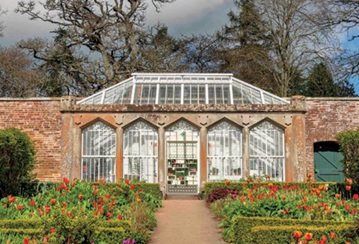Passivhaus
Passivhaus or 'Passive House' is an energy performance standard for dwellings, commercial, industrial and public buildings that can be adopted throughout the world.
It was developed in Germany in the early 1990s by Professors Bo Adamson and Wolfgang Feist. The first Passivhaus dwellings were constructed in Darmstadt in Germany in 1991. It is intended primarily for new buildings, although it can be applied to refurbishment projects, but this can be expensive.
Passivhaus suggest that, 'A Passivhaus is a building, for which thermal comfort can be achieved solely by post-heating or post-cooling of the fresh air mass, which is required to achieve sufficient indoor air quality conditions – without the need for additional recirculation of air.’ This means that a traditional heating or cooling system is no longer essential.
The Passivhaus standard can be achieved by measures including:
- Shading.
- Pre-cooling of the supply air.
- Night purging.
- Natural ventilation.
- Air-tightness.
- Mechanical ventilation heat recovery (MVHR).
- Insulation.
- Avoidance of thermal bridges.
- Passive solar gains.
- Exploitation of internal heat sources.
Whilst Passivhaus adopts the principles of passive design, it differs in its imposition of an overall limit on primary energy consumption. This limit includes; domestic hot water, lighting, projected appliance consumption, space heating, fans and pumps.
The primary energy demand target must be met in all cases, and either the specific heating demand target or the specific heating load target must be also met. In addition, there are limiting values for the performance of the building fabric, doors and glazing, ventilation systems, air tightness levels and thermal bridging. See Passivhaus Outline specification for details.
The energy balance of the proposed building must be verified using the Passive House Planning Package (PHPP).
Certification is available in the UK from a number of organisations approved to assess and issue the Passivhaus Certificate, the EnerPHit certificate (for retrofit projects) and PHI Low Energy Building Certificate. See The Passivhaus Institute.
[edit] Related articles on Designing Buildings
- Active House.
- Aktivplus.
- An Introduction to Passive House - review.
- Code for sustainable homes
- BREEAM.
- Fabric first.
- Flue insulation and air tightness requirements.
- Green deal.
- Home Quality Mark.
- Leadership in Energy and Environmental Design.
- NHBC technical standards.
- Passive design.
- PHribbon tool calculates embodied carbon of designs.
- Saffron Acres, Leicester, the UK’S largest Passivhaus residential development.
- Sustainability.
- The building as climate modifier.
- Warming houses using free CO2.
- Wood and carbon.
- Wood and passivhaus.
- Zero carbon homes.
- Zero carbon non-domestic buildings.
[edit] External references
- Passivhaus organisation.
- Passivhaus Trust.
- Passipedia.
- Passive House Institute.
- Passivhaus Outline specification
Featured articles and news
Construction contract awards hit lowest point of 2025
Plummeting for second consecutive month, intensifying concerns for housing and infrastructure goals.
Understanding Mental Health in the Built Environment 2025
Examining the state of mental health in construction, shedding light on levels of stress, anxiety and depression.
The benefits of engaging with insulation manufacturers
When considering ground floor constructions.
Lighting Industry endorses Blueprint for Electrification
The Lighting Industry Association fully supports the ECA Blueprint as a timely, urgent call to action.
BSRIA Sentinel Clerk of Works Training Case Study
Strengthening expertise to enhance service delivery with integrated cutting-edge industry knowledge.
Impact report from the Supply Chain Sustainability School
Free sustainability skills, training and support delivered to thousands of UK companies to help cut carbon.
The Building Safety Forum at the Installershow 2025
With speakers confirmed for 24 June as part of Building Safety Week.
The UK’s largest air pollution campaign.
Future Homes Standard, now includes solar, but what else?
Will the new standard, due to in the Autumn, go far enough in terms of performance ?
BSRIA Briefing: Cleaner Air, Better tomorrow
A look back at issues relating to inside and outside air quality, discussed during the BSRIA briefing in 2023.
Restoring Abbotsford's hothouse
Bringing the writer Walter Scott's garden to life.
Reflections on the spending review with CIAT.
Retired firefighter cycles world to raise Grenfell funds
Leaving on 14 June 2025 Stephen will raise money for youth and schools through the Grenfell Foundation.
Key points for construction at a glance with industry reactions.
Functionality, visibility and sustainability
The simpler approach to specification.
Architects, architecture, buildings, and inspiration in film
The close ties between makers and the movies, with our long list of suggested viewing.
SELECT three-point plan for action issued to MSPs
Call for Scottish regulation, green skills and recognition of electrotechnical industry as part of a manifesto for Scottish Parliamentary elections.
UCEM becomes the University of the Built Environment
Major milestone in its 106-year history, follows recent merger with London School of Architecture (LSE).
Professional practical experience for Architects in training
The long process to transform the nature of education and professional practical experience in the Architecture profession following recent reports.

























